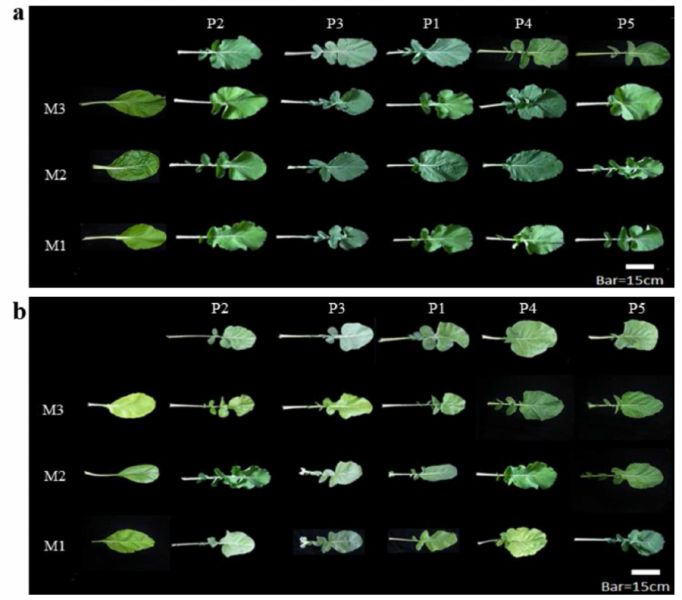生態農業:農業精準栽培管理技術開發【農藝學系郭寶錚教授】
| 論文篇名 | Morphological and genetic characteristics of F1 hybrids introgressed from Brassica napus to B. rapa in Taiwan |
| 期刊名稱 | BOTANICAL STUDIES |
| 發表年份,卷數,起迄頁數 | 2020, 61 (1), 1 |
| 作者 | Tu, Yuan-Kai; Chen, Han-Wei; Tseng, Kuang-Yu; Lin, Yen-Chun; Kuo, Bo-Jein(郭寶錚)* |
| DOI | 10.1186/s40529-019-0279-5 |
| 中文摘要 | 本研究利用5個B. napus模擬GM大油菜、3個台灣當地常在冬季裡作種植的B. rapa品種以及15個雜交F1後代做為試驗材料。進行植株外表性狀的觀察以及遺傳特性的分析。結果發現無論是利用外表性狀以及遺傳特性均可發現B. napus是否與B. rapa發生雜交的情形,此結果可應用於監測台灣田間所種植的小油菜是否被GM大油菜的花粉所汙染。 |
| 英文摘要 | Background Unintentional introgression from genetically modified (GM) oilseed rape (Brassica napus) to a relative is inevitable in the open field. A feasible and practical strategy for restricting the spread of GM offspring is to set a reasonable isolated distance between GM B. napus and the relatives. To define the isolated distance, a pollen donor/recipient pair is a prerequisite to conducting the field trial of pollen flow. However, because the cultivation of GM B. napus is prohibited in Taiwan, it is difficult to obtain relevant information. Thus, this study explored the morphological and genetic characteristics of five varieties of B. napus (donor), three varieties of B. rapa (recipient), and the 15 corresponding F1 hybrids, aiming to construct phenotypic data and genetic variation data and to select the most appropriate pollen donor/recipient for future field trials of pollen flow. Results The genome size of all F1 hybrids estimated using flow cytometry showed intermediate DNA content between B. napus and B. rapa varieties. Most of the F1 hybrids had intermediate plant height and blooming period, and the rosette leaves type and colors resembled those of B. napus varieties. The results of sequence-related amplified polymorphism (SRAP) showed an average of 9.52 bands per primer combination and 67.87 polymorphic bands among the F1 hybrid population. Similarity and cluster analyses revealed higher similarity between F1 hybrids and B. napus varieties than between F1 hybrids and B. rapa varieties. Furthermore, we identified a specific 1100-bp band (LOC106302894) in F1 hybrids and B. napus varieties but not in B. rapa varieties. Conclusions The rosette leaves and the DNA marker LOC106302894 observed in F1 hybrids are consistent phenotypic and genetic characteristics that can be used to identify the presence of unintentional hybridization from B. napus to B. rapa in Taiwan. Due to the prohibition of GM crop cultivation, the hybridization system of non-GM Brassica species in this study can be utilized as a mimic scheme to conduct pollen flow trials, thus facilitating the determination of the proper isolated distance. |







